May 8, 2017
Perhaps I’m a masochist who has spent far too much time running through forests wielding my obstacle racing spear…
…but I’m kind of enchanted with the concept of using sound waves, shocks, electricity and magnets to enhance one’s body.
I’m totally not kidding. From shocking my gonads into better orgasms to putting magnets on my collarbone (and admittedly, my nether regions) for better sleep and better sex, to blasting my body with healing acoustics, if it’s legal and if it’s safe, I’ve probably messed around with it (and yeah, that includes running through electroshock cables in Tough Mudder races, covered in mud with a dumb grin on my face).
So when I saw “For The Golden State Warriors Brain Zapping Could Provide An Edge”, I immediately perked up. Turns out the freakin’ NBA professional basketball champions used something called transcranial direct-current stimulation, or tDCS, to shock their heads before practice and before games.
What Is tDCS?
The headphones-like device these guys were using is perhaps something you’ve heard of before.
It’s called “Halo Sport”, and was designed by a former podcast guest of mine named Dr. Daniel Chao, who had previously worked at a company that used brain stimulation to treat epilepsy. The tDCS built into the Halo headphones relies upon a technology which, in its simplest form, involves attaching a couple of electrodes to a battery, sticking them to your head, and sending a tiny current (about five hundred to a thousand times lower than that used in electroshock therapy or an obstacle course race) through your brain.
The current changes the excitability of individual neurons, causing them to fire just a bit more quickly and readily during skill acquisition training. The electrodes incorporated in the Halo headphones are positioned to send a current through an area of your brain called the motor cortex, the control center from which commands to your muscles originate. The idea is that you put the headphones on for twenty minutes in the early stages of your workout or during your warmup (or even before playing a left-right hand coordination activity like a video game or a musical instrument), activate the stimulation with the associated smartphone app, and then start training — your brain will be ready to deliver “stronger, more synchronous” signals to your muscles, according to Halo, at least.
Now this concept of using electrical waves to change one’s brain really wasn’t an entirely unfamiliar concept to me. For example, I had been familiar for quite some time with the popular “9-Volt Nirvana” Radiolab podcast episode in which Sally Adee, an editor at New Scientist, reveals she was at a conference for DARPA – The Defense Advanced Research Projects Agency – when she heard about a way to speed up learning with something called transcranial direct current stimulation. In the episode, Sally finds herself wielding an M4 assault rifle, picking off enemy combatants with a battery wired to her temple, and discovering some pretty shocking improvements in her sniper skills (the already existent Reddit forum on building your own tDCS unit exploded after that particular episode came out).
Even back in 2013, I wrote this article about what was, back then, a brand new study on cyclists in which Brazilian sports scientists used non-invasive brain in the form of (tDCS) to apply a tiny electrical current to the cortex in the brain. The results of that brain tweaking were actually pretty darn impressive. After 20 minutes of real or fake brain stimulation, the cyclists completed an all-out ride to exhaustion. And sure enough – the cyclists who underwent the electrical stimulation had significantly lower heart rates, lower perceived exertion and a 4% higher power output (that may sound small, but is actually huge for a cyclist).
The Latest Research on tDCS
Since that article, (and, turns out, far before then), reams of additional science behind the concept of tDCS have emerged, and tDCS even has a sexy new title – “Neuropriming”. Here’s a brief summary of a few of my favorites for those interested:
Effects of tDCS On Neuromuscular Force & Fatigue:
- Cogiamanian 2007
- In this study, Cogiamanian and colleagues stimulated subjects before they performed bicep curls. Specifically they had to maintain a certain amount of force for as long as they could. He found that the subjects who received stimulation right before the task lasted longer compared to those who received sham (placebo) stimulation. He attributed this difference to a decrease in neural drive, which tDCS was able to correct for.
- Tanaka 2009
- Tanaka and colleagues tested subjects on a pinch force task, finding that the group that performed the task after receiving stimulation was able to pinch with more force than the sham group. The stimulation group also was able to achieve their maximum force faster (they increased their rate of force development), which is the key to explosive movements like jumping. Tanaka and colleagues also attributed the change to an increase in neural drive.
- Krishnan 2014
- Krisnan expanded on the results of Cogiamanian, finding that tDCS not only prevented neural drive from decreasing in fatiguing tasks, but actually increased during voluntary lifts. Specifically, subjects doing a bicep curl were able to activate a higher percentage of their muscle and in turn lift more weight after receiving stimulation compared to the placebo group.
Effects of tDCS on Motor Skill Acquisition
- Reis 2009
- Reis tested subjects on a finger sequence task where precise and accurate keyboard presses had to be performed as quickly and accurately as possible. Not only did Reis find a greater improvement in the stimulation group compared to a placebo group after 5 consecutive days of training, but the stimulation group was still better at the task 3 months later, demonstrating that the learning sticks without continued stimulation.
- Waters-Metenier 2014
- Waters-Metenier tested finger coordination in subjects with a piano chord task over 4 days. After the first day, the stimulation group performed significantly faster and with fewer errors than the sham group. This gap only widened over the next 3 days.
- Koyama 2014
- Koyama focused on the idea that speed is a skill. Using a simple finger movement task, researchers were able to increase the acceleration of the fingers with tDCS when compared to the sham group. This increase came from training the fingers (and the neurons that control them) to move faster.
- Kaminski 2016
- Kaminski tested subjects on a dynamic balance task using a high tech balance board. She found that the subjects who were stimulated before the task spent more time balanced and needed less movement to return to balance compared to the sham group.
Mechanistic Overview of How tDCS Works:
- Nitsche 2015
- Nitsche reviewed the basic mechanisms of how stimulation improves motor performance. He focuses on increasing the activity level in the motor cortex, which in turn increases the activation levels of the muscle. More neuronal and muscular activity leads to more strength and skill in a task.
- Monai 2016
- Monai and colleagues looked at the chemicals involved in increasing the activity level of the motor cortex. They focused on the role of calcium, and found that Calcium levels increased immediately following stimulation. Plus, if you block the calcium changes, the effects of tDCS (increased activity and increased learning) are canceled.
For those not ready to brave a neuroscience paper, here’s the basic concept in a nutshell: the fundamental event behind which neuroplasticity happens at the neuronal level is called an action potential, which is what happens when a neuron fires. During an activity such as exercise or playing sports, your brain fires a multitude of these action potentials in your motor cortex, and this leads to new and stronger circuitry being created.
By applying electrical stimulation, researchers figured out they can actually lower the firing threshold of the neurons in the brain, which causes the brain to fire more action potentials. As I discussed in detail with Dr. Daniel Chao when I hosted him on this podcast episode, scientists have also found that neurons that fire together wire together, and this is what creates the adaptive response the brain has to training (e.g. “I can do this more efficiently” or “this doesn’t feel hard anymore”).
So, because you’re firing more action potentials (but not causing those action potentials to happen automatically), you are able to accelerate the rate of learning in the brain or to increase the brain’s tolerance to discomfort.
Think of it this way: when you’re learning a motor skill, whether it’s a tennis serve,ukulele strum, doing a squat, or toeing the line for an obstacle race or triathlon, the signal from your brain telling the body to move like a waterfall of water. The first time that waterfall goes over the cliff, it’s just a massive quantity of water, with no fine tuning and no precision. As you train, your brain learns how to put that water into very specific places using strategically placed rocks along the falls. With training, your brain could theoretically learn to fill a tiny glass of water with all of the water from Niagara Falls. The tDCS simply allows your brain to build rocks along the falls much faster than it could without stimulation, thus increasing the ability of the brain to learn a motor skill as fast as possible.
At least, that’s my dumb analogy.
How To Learn New Skills Faster
So the waterfall is doing repetitions, or “reps”, whichever you’d prefer.
After all, have you ever actually thought about the concept of what it takes to learn a new skill?
Take archery, for example, one of my favorite skills to practice of late. Say you’ve never shot an arrow in your life. What would it take for you to become a master archer and, more interestingly, what’s stopping you from giving it a try? The answer is, of course, simple:
Repetitions.
To actually master a skill, whether it’s archery, running, or anything else performance-related, you have to be willing to endure countless repetitions. All those repetitions are the only reason we as humans can train our muscles to move in the exact way that we need them to in order to be able acquire skills like hitting a bullseye. When added up, all those repetitions represent both the time and energy needed for mastery.
“Sets and reps, baby”. I believe it was Arnold Schwarzenegger who said that. Or something close to it.
You know what else? All that time and energy for repetitions can be extremely intimidating. I wouldn’t be surprised if every year, billions of people say “no thanks” to even attempting to learn new skills that they might actually enjoy.
And this intimidation is why I think the biohacking industry is perhaps more interesting now than it has ever been. Sure, using wearables to get more data on our body’s performance helps us make new decisions about how to live our lives. However, eventually the data is going to be too much — biohacking needs to go beyond just giving us more information. What really interests me is figuring out a way to use the data as a starting point that leads to figuring out how to shorten the time it takes to achieve skill mastery.
Think of the possibilities if “picking up a sport” or “learning a new motor skill” wasn’t so darn daunting. More people would try to tackle new challenges, more people would excel at what they love, and more people would develop new performance pursuits that allowed them to take advantage of accelerated skill learning.
So the real reason I delved into looking into tDCS and the Halo in the first place, even more attractive than the concept of electroshock (surprise!), was the promise of figuring out how to learn motor skills faster and how to become a better version of myself. That’s why I got started down this biohacking rabbit hole in the first place. And that’s exactly why I was beyond excited to try brain shocking – er – neurostimulation for the first time.
The Effects Of tDCS On Performance
OK, OK, so I know you’re probably wondering if I actually jumped in and tried this thing. I did indeed. And if you listened to my podcast with Dr. Daniel Chao entitled “How To Learn Faster, Jump Higher, Increase Explosiveness, Push Harder & Biohack Your Brain Beyond It’s Normal Capacity,“ then you probably already know a little bit about what happened when I personally used tDCS.
I’ll fill you in. But first, since I read that initial article about the Golden State Warriors using tDCS in the form of the Halo headphones, I’ve noticed plenty more athletes tapping into tDCS, including:

– Last Wednesday, Halo officially announced a partnership with the San Francisco Giants. They’ve been working with them since January 2016, and they vetted the technology against nine standard performance measures to see its effect. They saw dramatic increases in strength, skill, and explosiveness as a result of using Halo Sport — notably in the 20-yd dash, which is their core metric for player athleticism.

– Halo recently worked with Sparta Science, which saw a 3x improvement on MLB (pro baseball) training using Halo Sport vs. not. Sparta uses advanced force plate software to measure three metrics: Load, Explode, and Drive, and then crafts a training plan to address whichever one is most deficient.
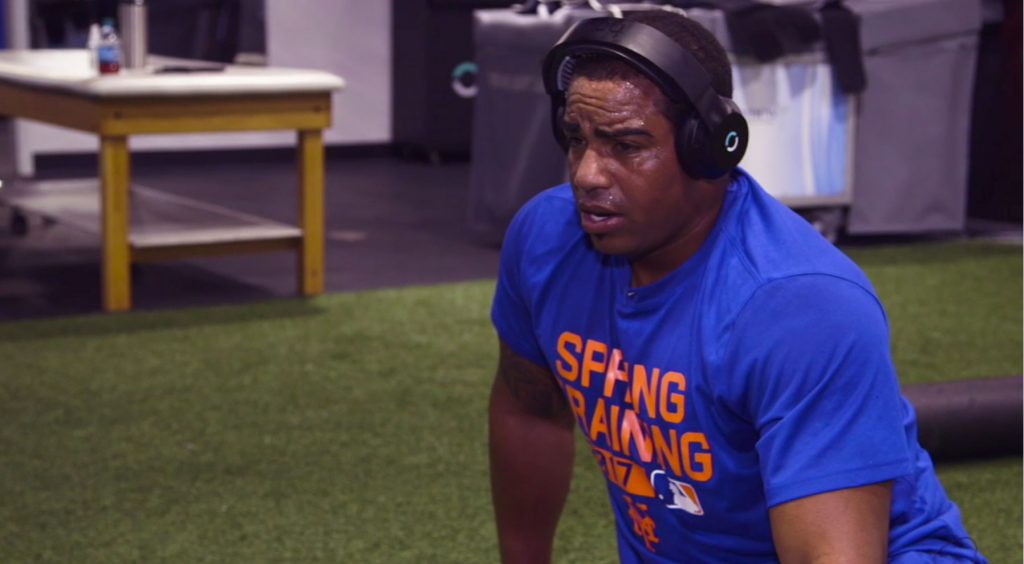
– Yoenis Cespedes trained this offseason with Halo Sport and ESPN aired a segment with the New York Mets Yoenis Cespedes has also been training with Halo Sport.

– North Carolina used Halo Sport on their path to the NCAA basketball championship. Those watching the pregame closely would have seen UNC players like Isaiah Hicks warming up with Halo Sport prior to the game.
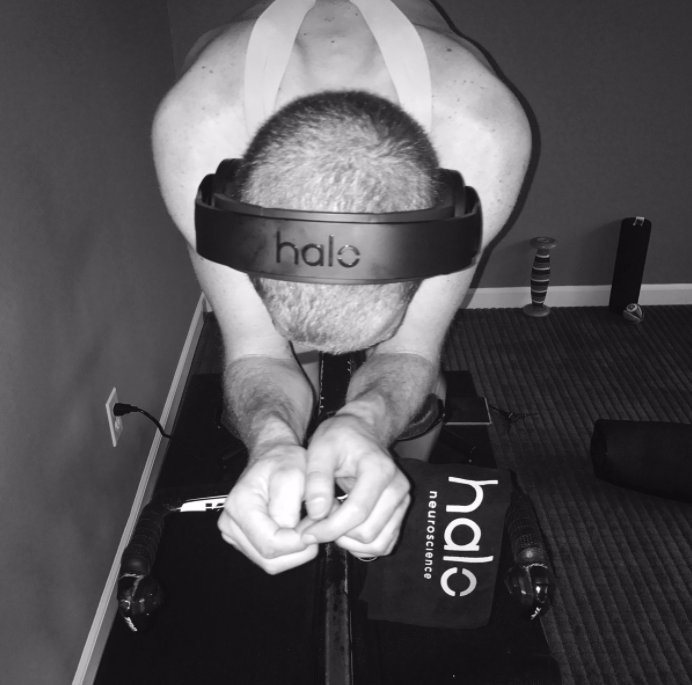
– Andrew Tolansky, cyclist for Team Cannondale now uses Halo Sport, and you can see an update from Andrew here “The Ergogenic Effects of Transcranial Direct Current Stimulation on Exercise Performance”.
These results are really all based on the concept of improving neuroplasticity with neurostimulation.
You’ve probably heard or understand the term “muscle memory:” it’s the way you acquire new skills through our body’s mechanistic process of encoding practice. But here’s the thing: muscles don’t really have memories. All of what they can accomplish in sports and performance – whether it’s a golf swing, swimming, weight lifting, trail running, whatever – relies on the brain encoding practice to learn how to communicate with the muscles.
Scientists call the brain’s innate capability for skill acquisition “neuroplasticity.” Essentially, the human brain adapts to repetition by creating new and/or stronger electrical circuits that allow us to perform the skills that we train. In layman’s terms, the brain can rewire itself as a result of training so that we can produce new skills.
Though neuroplasticity applies to all learning, for movement-based training and sports performance we rely on one special part of the brain: the motor cortex (other skills, e.g. memory, vision, and foreign language, are encoded in other parts of the brain). As we complete repetitions focused on gross motor skills (think: jumping, sprinting, and lifting) or fine motor skills (e.g. playing the piano, shooting a free throw, or precision surgical cutting with a scalpel), the motor cortex creates new and stronger electrical circuits that result in improving performance.
So, for anyone who wants to improve how he or she moves, whether they’re an athlete, musician, surgeon, dancer, yogis, etc.,— the brain, not the body, is the most critical limiting factor in “becoming better at something.”
Make no mistake — muscles cannot do anything on their own. They rely on coordinated output from the brain.
My Own Personal Experience With the Halo
When I first received my own Halo Sport, courtesy of the folks at Halo for my personal review, I noticed some attention to detail and design that suggested it wasn’t going to be a complete nerdfest on my skull. Instead, you can actually see the influence of Beats by Dre (former CEO Susan Paley is an advisor) combined with the look a of sleek, clean medical device. It’s a solid and sturdy piece of equipment built for repeated use (the founders of Halo Neuroscience, both doctors, previously built a medical device called Neuropace, which is an FDA unanimously-approved implantable neurostimulation system that works like a pacemaker for the brain to help people with epilepsy).
The process for using Halo is pretty simple: you wet the device’s “Primers” — these grey spiky pads that get inserted into the headband of the headphone, then position the device on your head, and finally turn it on via an app on your phone. In my first attempt, after following the company’s instructions, I was able to get the product working in about five minutes. Now, I can get it up and running in less than ten seconds (there’s that neuroplasticity at work, baby).
Turning on the product for the first time was an interesting experience. I noticed a slight tingling sensation on the scalp, very similar to light electrical muscle stimulation, but on the top of my head, coming right through the hairs. But that’s it. You don’t really feel anything else different. Tough Mudder enthusiasts will be disappointed.
And then I started training – and that’s when I really noticed something different.
For that day’s workout, I planned to hit a light cycling warm-up for 20 minutes while the HALO did it’s Neuropriming thing, and then follow that with an aggressive series of weight training complexes. According the research behind Halo Sport, during a 20-minute Neuropriming session and for the subsequent 60 minutes, any rep that I completed would theoretically be easier and more valuable toward learning a skill in my motor cortex.
So I went to work.
It was one of the best workouts of my life. No joke. I felt hyperfocused during my warm-up, and the bicycling cadence was at a much higher rate than normal without me needing to focus too much (120RPM).
But the weight complex I did afterwards was crazy. My rating of perceived exertion (RPE), which is a measurement of how hard I thought I was working vs. how hard I actually was working…dropped like a rock. I was literally ripping the barbell off the floor for what would normally be a puke inducing complex of barbell deadlift to Romanian Deadlift to bent row to hang clean to front squat to push press to back squat to push press. Instead, at my normal weight I doubled my reps from 4 to 8.
On the flipside, and maybe this is a disadvantage, I was way more sore the next day. Now don’t get me wrong, the primary purpose of Halo neuropriming would really have been for me to learn a new complex better, not necessarily push through an old one harder. And I was indeed thinking “faster” between reps. But the ability to push far harder than usual is a known side effect of neuropriming (noted earlier in this article), and I’ve actually found just as much value out of that.
Since that first workout, in no particular order, since I’ve started neuropriming with Halo, I have now:
- Picked up new ukulele and guitar songs far faster using the hand coordination feature on the app
- Stepped into very difficult workouts with far less apprehension because the device seems to make every workout seem far less draining, especially if I’m tired or low on sleep
- Used it prior to obstacle course training to pick up new skills far faster (e.g. changing the order of rings and ropes on my swinging rig)
- Saved myself a crapload of money from not having to buy trendy Dr. Dre Beats (yeah, they work as backup headphones)
Now don’t get me wrong – with respect to potential, this thing is not going to make anybody super human. It can only make you acquire the skills that you would normally be able to acquire at a faster rate and with less exhaustion or at least, seemingly less exertion. Unfortunately, genetics and a small dose of gravity will still limit you from leaping tall buildings in a single bound.
And focusing on form while neuropriming, just like any training, is also critical. Neuropriming simply gives you a way to make your training more productive for skill acquisition. So if you feed your brain low quality reps, or reps with incorrect form, that’s the skill that you will learn faster. In other words, don’t put this thing on then go practice a sucky golf swing.
But I do believe neuropriming offers an edge for athletic performance, motor skill learning, fitness and in my own experience, musical motor skill acquisition.
Is tDCS Safe?
I’ll admit it: the reality here is that using electricity to “shock your brain” seems like a far out thing to do (but I shocked my crotch too, remember?).
And here’s my response: why are people not worried about ingesting a pill that’s designed to change the way their brain performs? I mean, that’s exactly what coffee and caffeine offer us.
Make no mistake: caffeine and coffee are completely foreign agents for the brain. They’re chemicals designed to create a chemical reaction. So if you argue this is a foreign experience, then you better set down and step away slowly from that cup of coffee, or any other supplement that contains something your body wouldn’t normally produce itself.
And electricity? Well, that’s just the way the brain works. The brain, if nothing else, is an electrical organ. Your body is a battery (there’s actually a great book about that). And so, if electricity were bad for the brain, the brain would be bad for itself. As a matter of fact, the amount of current running through Halo Sport tops out at 2.2 mA – much less than 1/1,000 the amount of energy the brain itself generates as you read this right now.
The way I see it, technology like this is the future of optimizing brain performance: technology designed to improve function. It’s not drugs or drug therapy. Drugs and drug therapy are impossible to localize, side effects difficult to predict, and long-term effects hard to produce. With electrical stimulation, it’s the opposite. You can hyperlocalize, there are no side effects, and you can have an impact on long-term learning.
We’ll see where the industry goes from here, but for anybody interested in improving performance with wearable technology, especially via brain stimulation, the Halo is a very good entry point and the safest, most stylish looking way to do it that I’ve seen.
If you click here, you automatically get $120 off with promo code GREENFIELD120, which knocks your own personal Halo from $750 down $630. But it’s actually less than that, because they also give you no-interest financing for 6 months, along with free 2-day U.S. shipping and a 30-day money back guarantee.
So basically, for around $50 a month, it’s well worth at least giving it a try. Get it while the gettin’s good.
I’m going to hazard a guess that once you enter the wonderful world of biohacking your brain with electricity, you’ll find yourself shocked at the results. Sorry, couldn’t resist. Leave your questions, comments and feedback below and I promise to reply!

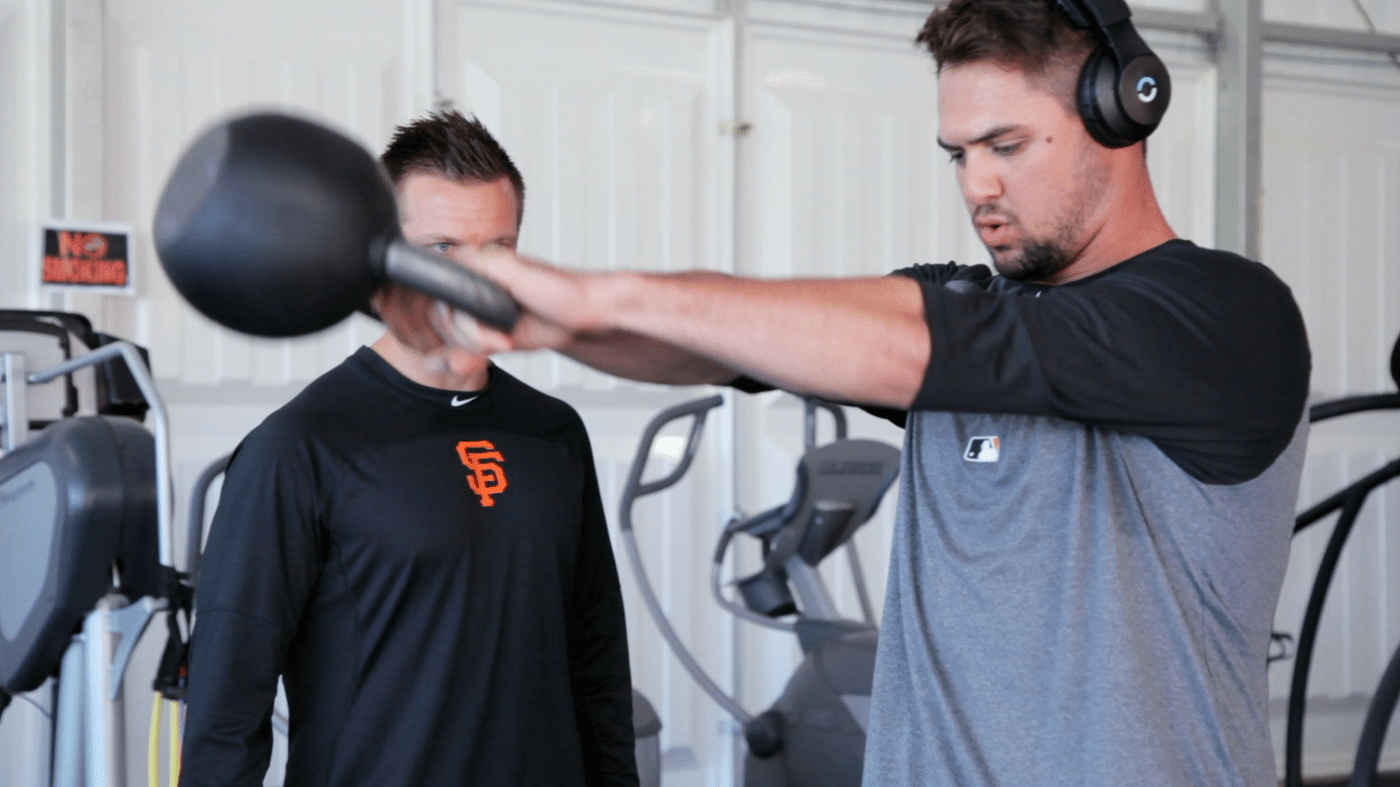
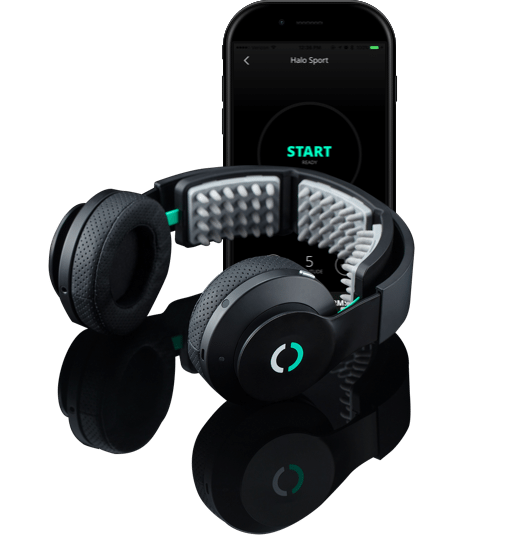






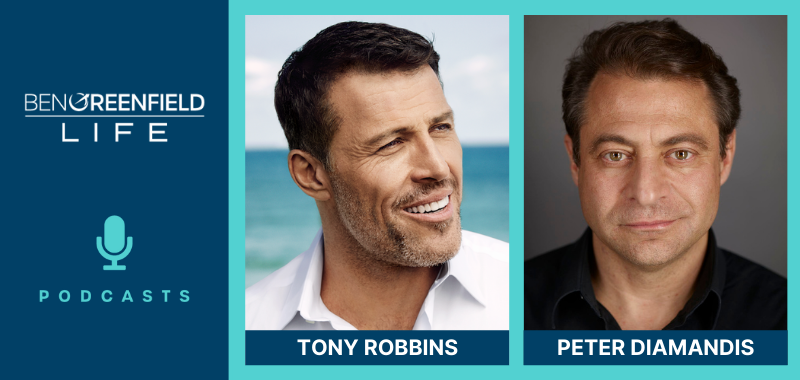





Hi! Are the headset using bluetooth connection to work? How do this coincide with your podcast about radiation?
https://bengreenfieldfitness.com/podcast/lifestyl…
I avoid bluetooth whenever possible, but I believe that sometimes the benefits of certain devices far outweigh the risks.
To give you an example, the amount of electromagnetic energy absorbed by a body is quantified in terms of SAR, or specific absorption rate. The US safe standard is most relevant to cell phones, which as you might imagine actually transmit quite a bit of energy, is 1.6 watts per kilogram. Some smartphones have a SAR above 1.0; other phones – smart and otherwise – are well below 1.0.
For things like Bluetooth headsets, the SAR is much lower – a Bluetooth headset might have a SAR around 0.1 W/kg, and a modern low-emissions Bluetooth headset might be less than 0.01 W/kg – less than one-hundredth of the safe standard. And, keep in mind that a Bluetooth headset sits directly in the ear and transmits almost constantly during a call.
The BLE transmitter used in a product like Halo is even friendlier. Since it only transmits a small amount of data, it only activates when necessary and its EMF emissions are even less than those of a low-power Bluetooth headset.
Tried to purchase and coupon was expired and no 6 months no interest deal. FYI there’s other coupon codes on other site for better discounts. I would rather by from Ben but no luck today
Discount works but the “no interest” financing option is not available?
Lucky I’m bald
I experimented with TDCS for a calculus exam & still failed – however I converted to CES which is exceptional but subtle and greatly increases every day resilience, stress resistance and overcoming caffeine or other addictive withdrawal.
TDCS unfortunately while improving some abilities may negate others at the same time & the protocols are not clear cut yet
I don’t want to risk losing my artistic skills at the expense of something else
Can you elaborate on what you said about risking artistic skills? Specifically discussions or studies that show that potential long term effect? I’m really interested in tDCS too but only assuming it provides a temporary enhancement without any long term rewiring.
His name is Yoenis not Orlando in your second mention of him.
“Yoenis Cespedes trained this offseason with Halo Sport and ESPN aired a segment with the New York Mets Orlando Cespedes has also been training with Halo Sport.”
Thanks, we'll get it fixed asap.
The price is coming up $750…